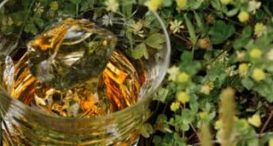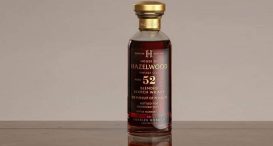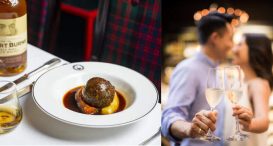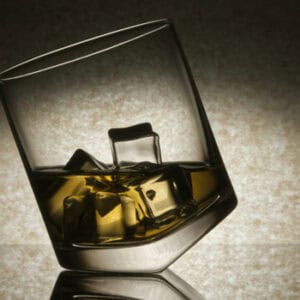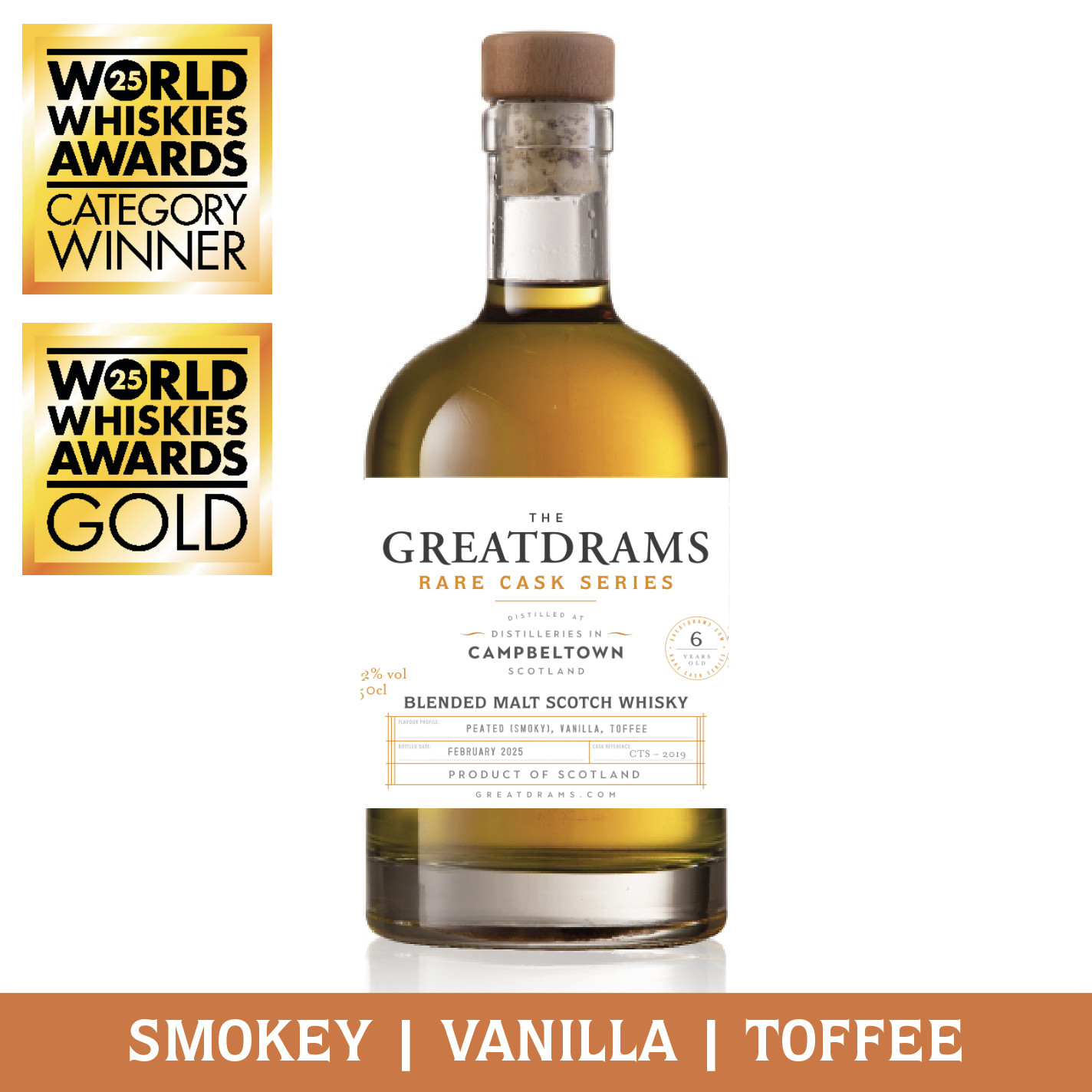The Ultimate Guide to Courvoisier
You know when you’re, say, sixteen years old, attending one of your first parties and a friend asks you if you'd like a Courvoisier?
No?
Nah, me neither.
Unlike the humble Bacardi Breezer, Courvoisier isn’t really the kind of drink you tend to come into contact with in your teenage years. For most of us, Courvoisier is moreso a drink that sits at the back of our parents’ alcohol cupboard, looking all sophisticated and, like all other drinks in the cupboard, spoken of rarely, if ever. But fear not!
This isn’t the GreatDrams Ultimate Guide to Courvoisier for no reason. By the time you’re done reading this, you’ll know Courvoisier inside out. You’ll know what Courvoisier is, it’s made from, a bit about it’s history, how to drink it and how much it costs. So, without further adieu, let’s begin.
First things first. What is a Courvoisier?
Asking what Courvoisier actually is is a fair question. The simple answer is Courvoisier is a brand. More specifically, it’s a revered, respected and award winning brand of Cognac. And a Cognac? That’s a type of brandy, named after a town called Cognac, over in France. To complete the conundrum, brandy is a 35–60% spirit made from distilling wine.
If you follow the dominoes, Courvoisier is a type or distilled wine, typically drunk after dinner.
What Courvoisier is made from?
Courvoisier is a type of brandy, ie, a distilled wine, so the simple answer is Courvoisier is made from grapes. In all honesty, though, the simple answer sells Courvoisier short.
Courvoisier comes in a few different varieties and the prices ingredients and production processes of each vary, but in general you can expect Courvoisier to be made from a blend of several different crus – ie, vineyards of recognised quality – aged for several years.
Courvoisier was not originally a Cognac at all
Officially founded in 1828 in Jarnac by Felix Courvoisier and Jules Gallois, Courvoisier today is one of the top four selling Cognacs in the world.
That certainly wasn’t always the case.
Although Courvoisier is a Cognac today, it actually started life as a wine produced in the suburbs of Paris by Emmanuel Courvoisier and Louis Gallois (whose sons, Felix and Jules, were the ones who made the move to Jarnac).
Emmanuel and Louis had already built up quite a reputation in Paris, helped in no small part by having the support of Napoleon behind them. The emperor visited the producers in 1811 and later took several barrels of the stuff with him during his exile on the island of St Helena.
From this, the drink became know as “The Cognac of Napoleon” and his son later bestowed the title “Official Supplier to the Imperial Court” on the company.
But aside from the support of a tyrannical warmonger, the producers were quite successful themselves.
Courvoisier becomes Cognac
They moved in 1828 because they believed moving was what their customers wanted and they sought to improve Cognac, theirs in particular.
The move proved to be a wise choice and by the 1840s Felix and Jules, who were now running the operation, were able to build a luxurious and expensive Château on the banks of the river Charente.
They based their headquarters in the new, elegant building and that is where they remain today.
In the meantime, Felix passed away in 1866 without a direct heir and left his shares and control of the company to his nephews, the Curlier Brothers.
The brothers had lived in Jarnac their entire lives and were well versed in the Cognac business.
Courvoisier’s unlikely English fan
They developed the brand and focussed on exporting to the UK, where Cognac became a big hit.
The producers’ success continued all throughout the 19th century, with Napoleon III’s third praise coming in 1869. A stash of 216 bottles of Courvoisier Cognac were even found in Charles Dickens’ collection of alcohol when he died, and Dickens’ Courvoisier was largest amount he had of any bottle. Each was initialled with F. Courvoisier, showing the writer’s personal admiration for the brand.
Then, in 1889 Courvoisier were asked to be part of the opening celebrations for the Eiffel Tower. This was a wonderful accolade and the brand was later given the Medaille d’Or, an international prize of great acclaim.
Courvoisier’s promise during the war
The company continued on and were very successful. In 1909 they were bought over by the Simon family of England, who had been in the wine and spirits industry for generations.
The Simons saw the great potential in Courvoisier and took the brand to global success.
They re-marketed it with a silhouette of napoleon in the background, to highlight the quality and famous connection. This became an iconic advert in the spirits industry.
When war struck in the 1940s, managing director George Simon was forced to leave France. The Château was taken over by the Germans, who used it as a casino.
Simon entrusted Courvoisier to George Hubert and Christian Braastad and eventually even sold it to them in the hope that it would not be taken over by the Germans.
This was on the promise that it would be sold back to him, which it was in 1945.
From then on the brand has gone from strength to strength.
The “Prestige de la France” award
Over the decades they have experimented with new releases such as Courvoisier Gala and were the first Brandy to advertise on TV.
They are now the only Cognac producers to ever have received the “Prestige de la France”, one of the highest awards in France.
Today they are one of the biggest selling Cognac brands worldwide and have opened the Jarnac Château as a museum.
With plenty more innovative products coming from Courvoisier, the future looks even brighter than their past.
The Courvoisier range (and Courvoisier prices)
Today’s range of Courvoisier is ever expanding.
At the entry level end of the spectrum, Courvoisier VS Cognac can be picked up for around £23 ($30).
VSOP is a little more expensive but still only costs around £25 (or $32). Courvoisier L’essence Cognac, a super-luxury blended from over 100 ancient eaux-de-vies from Grande Champagne and Borderies, costs close to £2000.
But how do you drink it?
Pour yourself a dram and drink.
That’s me being sarcastic but in all honesty that’s actually the best way to go. No need for mixers, no need for ice. If you want to get technical, hold the glass in the palm of your hand to heat the Courvoisier a little while drinking.
Cognac in general is usually served either after dinner, with rich foods or all in it’s own, and it’s the latter I’d go for.
If you absolutely must get a mixer out, you can make some rather nice cocktails with Courvoisier VS or Courvoisier VSOP (please, do not spoil a nicer Courvoisier than these with mixers. I beg of you.)
You can go 1.5 parts Courvoisier to 1 part Amaretto and have yourself a French Connection, or 2 parts Courvoisier to 1 part Cointreau and lemon juice (to taste) for a sidecar.
And finally, on the question of which is better, Courvoisier VS or Courvoisier VSOP, Courvoisier VS is aged for two years. Courvoisier VSOP is aged for 4 years, which explains why it costs a tiny bit more. Most people – the brand included – see VSOP as better but you know what?
Try them both and make up your own mind.



